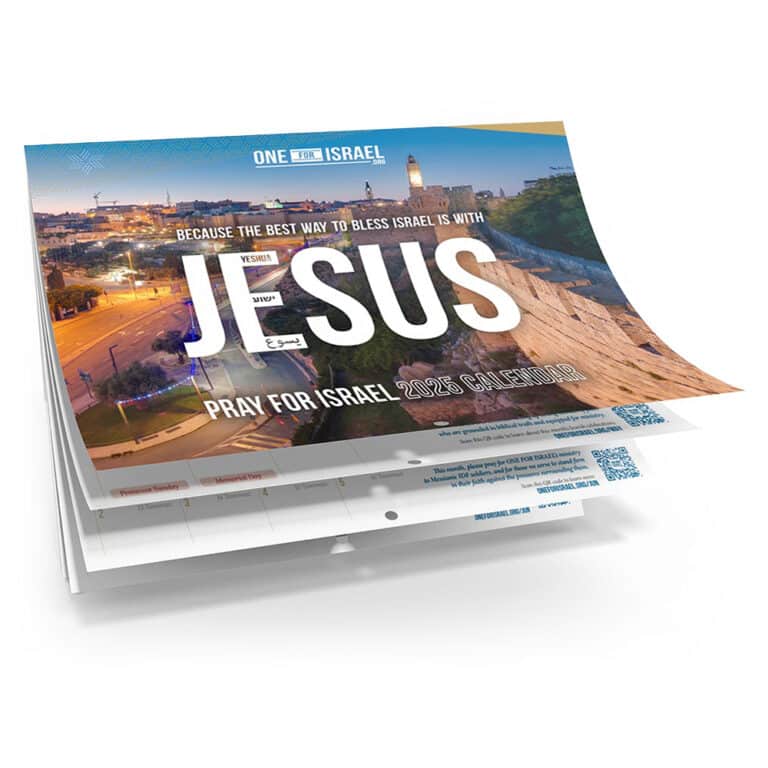More than any other book of the Hebrew Scriptures, the writings of the prophet Daniel confront us with evidence of the time of Messiah’s coming—evidence that many people would rather not see. But it is there and cannot be ignored.
That Daniel was indeed a prophet is well substantiated. He accurately prophesied the rise of the Medo-Persian, Greek and Roman empires even at a time when the Babylonian Empire, which preceded them all, was at its height. He accurately predicted the fortunes, conflicts, wars and conspiracies of the two kingdoms of Syria and Egypt between the fracturing of the Greek Empire and the conquest by Rome. He prophesied the role of the Maccabees during this period. It is Daniel’s detailed accuracy in his prophecies that has caused many critics to try to give a late date to the book of Daniel, although no evidence has been discovered that would negate the book’s composition at the time that it claims to have been written. At the very latest, the book was completed around 530 B.C.E.
The purpose of this article is to discuss in some detail verses 24-27 of Daniel nine. However, it will be wise to survey the entire chapter in order to see what engendered the prophecy of when Messiah would come.
The Background—Daniel 9:1-2
The date for Daniel’s prophesy is “the first year of Darius,” which means that it occurred in the year 539 B. C. E., about 66 or 67 years after the Jews initially went into exile to Babylonia.
It was on this occasion, Daniel stated, that he was studying the Scriptures; and from these Scriptures he came to understand that the number of years for the completion of the desolations of Jerusalem was almost over, since the duration was to be 70 years. Daniel mentioned that he was studying “books,” and we can see for one that he had been studying the writings of Jeremiah; the lives of Jeremiah and Daniel did overlap to some extent. On two occasions (Jeremiah 25:10-14, 29:10-14) Jeremiah predicted that the captivity and desolation of Jerusalem would last 70 years. What other books Daniel may have been studying we cannot know with certainty. But there are some strong possibilities that he also studied the book of Isaiah, since Isaiah actually named Cyrus as the one who would permit the Jews to return (Isaiah 44:28-45:1). Furthermore, there are other writings in Moses and the Prophets that spelled out some specific conditions for the establishment of the messianic kingdom, and Daniel may have looked at some of these as well (Leviticus 26:40-43, 1 Kings 8:46-53, Jeremiah 3:12-18, Hosea 5:15-6:3). These passages emphasize that Israel as a nation must repent and confess sin prior to the establishment of any kingdom of the Messiah.
Reckoning the 70 years from the year 605 (when the Jews went into exile) would bring the end of the 70 years to 536 B.C.E. Daniel realized that the captivity had only about three years to go.
But Daniel not only expected the captivity to end after 70 years, he also expected a final termination of any possibility of future desolations for Jerusalem. He had acted as if the messianic kingdom were about to occur: since the Word of God was to be established on the basis of prayer, he prayed; and realizing that the prerequisite was the confession of national sin, he confessed the sins of Israel.
Daniel’s Prayer—Daniel 9:3-19
Daniel’s detailed prayer can be divided into two portions. The first (verses 3-14) is the confession of sin. Daniel acknowledged both sin and guilt, which had been incurred in two ways—first by disobedience to the Law of Moses, and secondly by disobedience to the prophets who came after Moses. Daniel neither denied the sin of his nation nor his own sin, and by the use of the pronoun “we,” Daniel fully identified with all Jewish people in their sins. He did not see sin as merely a bad habit, but as something ingrained in the people that had brought on divine judgment. This disobedience to both the Law and the Prophets caused Israel “confusion of face,” an idiom meaning a sense of shame. It also resulted in the need for forgiveness. Here Daniel confessed that to God belong forgiveness and mercy, and that forgiveness was needed. Daniel concluded the first part of his prayer by describing the punishment for sin and guilt. That punishment, captivity in Babylon, confirmed the words of the prophets who had predicted it and confirmed the Law of Moses, which taught that divine judgment would come as a result of disobedience.
The second part of the prayer (verses 15-19) is a plea for mercy. Daniel made his plea on the basis of righteousness—not Israel’s, but God’s righteousness. He also pleaded for mercy on the basis of God’s grace, for Israel did not merit mercy; but the grace of God was (and is) able to extend it anyway. Furthermore, the righteousness of God required him to fulfill his promises, and therefore he should do so at the end of the 70-year period. The conclusion of Daniel’s prayer is very dramatic: “O Lord, hear; O Lord, forgive; O Lord, hearken and do; defer not, for thine own sake, O my God; because thy city and thy people are called by thy name.”
The Arrival of Gabriel—Daniel 9:20-23
Then, while Daniel was presenting his supplications, he was interrupted. He apparently had intended to say more, when Gabriel arrived. The interruption came by the touch of the angel’s hand, “about the time of the evening oblation.” This refers to the daily, regular evening sacrifice that was offered while the temple stood. Although it had not been practiced for seven decades, Daniel showed his longing for the return from captivity and for the rebuilding of the temple by remembering the sacrifice.
Gabriel told Daniel that the purpose of his visit was (1) to correct Daniel’s misunderstanding concerning when the messianic kingdom would be set up and (2) to present God’s revelation, which contained a timetable for Messiah’s coming.
The Decree of the 70 Sevens—Daniel 9:24a
Gabriel’s prophecy to Daniel began with the words, “Seventy sevens are decreed upon thy people and upon thy holy city…”
Many English versions have translated the phrase to read “seventy weeks.” But this translation is not totally accurate and has caused some confusion about the meaning of the passage. Most Jews know the Hebrew for “weeks” because of the observance of the Feast of Weeks, and that Hebrew word is shavuot. However, the word that appears in the Hebrew text is shavuim, which means “sevens.” The word refers to a “seven” of anything, and the context determines the content of the seven.
Here it is obvious Daniel had been thinking in terms of years—specifically the 70 years of captivity. Daniel had assumed that the captivity would end after 70 years and that the kingdom would be established after 70 years. But here Gabriel was using a play upon words in the Hebrew text, pointing out that insofar as Messiah’s kingdom was concerned, it was not “70 years,” but “70 sevens of years,” a total of 490 years (70 times seven).
This period of 490 years had been “decreed” over the Jewish people and over the holy city of Jerusalem. The Hebrew word translated “decreed” literally means “to cut off” or “to determine.” In chapters 2, 7 and 8, God revealed to Daniel the course of future world history in which gentiles would have a dominant role over the Jewish people. This lengthy period, which began with the Babylonian Empire to continue until the establishment of Messiah’s kingdom, is for that reason often referred to as the “Times of the Gentiles.” Now the prophet was told that a total of 490 years was to be “cut out” of the Times of the Gentiles, and a 490-year period had been “determined” or “decreed” for the accomplishment of the final restoration of Israel and the establishment of Messiah’s kingdom.
The focus of the program of the 70 sevens was “thy people and…thy holy city.” The “people” were Daniel’s people, the Jewish people, and the city was Daniel’s city, Jerusalem. Though he had spent the vast majority of his life in the city of Babylon, Jerusalem was still Daniel’s city. For Jews, whether they are in the land or outside the land, their city is always Jerusalem and not any other.
The Purpose of the 70 Sevens—Daniel 9:24b
Daniel was next told by Gabriel that the 70 sevens are to accomplish six purposes. The first is to finish transgression. The Hebrew word translated “to finish” means “to restrain firmly,” “to restrain completely” or “to bring to completion.” The Hebrew word translated “transgression” is a very strong word for sin and more literally means “to rebel.” The Hebrew text has this word with the definite article, so literally it means “the transgression,” or “the rebellion.” The point is that some specific act of rebellion is finally going to be completely restrained and brought to an end. This act of rebellion or transgression is to come under complete control so that it will no longer flourish. Israel’s apostasy is now to be firmly restrained, in keeping with a similar prediction in Isaiah 59:20.
The second purpose of the 70 sevens is to make an end of sins. The Hebrew word translated “to make an end” literally means “to seal up” or “to shut up in prison.” It means to be securely kept, locked up, not allowed to roam at random. The Hebrew word translated as “sins” literally means “to miss the mark.” It refers to sins of daily life, rather than to one specific sin. Even these sins are to be put to an end and taken away. This, too, is quite in keeping with predictions by the prophets that proclaim that in the messianic kingdom, sinning would cease from Israel (Isaiah 27:9, Ezekiel 36:25-27, 37:23, Jeremiah 31:31-34).
The third purpose is to make reconciliation for iniquity. The Hebrew word translated “to make reconciliation” is “kaphar,” which has the same root meaning as the word “kippur,” as in Yom Kippur. The word “kaphar” literally means “to make atonement.” The third purpose, then, is to make atonement in some way for iniquity. In fact, it is by means of this atonement that the first two purposes will also be accomplished, that of finishing the transgression and making an end of sins. The word translated “iniquity” refers to inward sin. This has sometimes been referred to as the sin nature, or perhaps a more common term among Jewish people would be yetzer hara,” the evil inclination.”
The fourth purpose of the 70 sevens is to bring in everlasting righteousness. More literally this could be translated “to bring in an age of righteousness,” since the Hebrew “olam” is better translated as “age” rather than as “everlasting.” This age of righteousness is to be the messianic kingdom spoken of in the Prophets (Isaiah 1:26, 11:2-5, 32:17; Jeremiah 23:5-6, 33:15-18). It is this very age that Daniel had been expecting to see established after the 70 years of captivity, but now he is told that will only be after the 490-year period.
The fifth purpose is to seal up vision and prophecy. Here Daniel used a word which means “to shut up.” So “to seal up” means to cause a cessation or to completely fulfill. Thus, vision and prophecy are to be completely fulfilled.” Vision” is a reference to oral prophecy, while “prophecy” refers to written prophecy. Both oral and written prophecy will cease with the final fulfillment of all revelations.
The final purpose of the 70 sevens is to anoint the most holy. A better translation here would be “to anoint a most holy place.” This is a reference to the Jewish temple which is to be rebuilt when Messiah comes. It refers to the same temple that Daniel’s contemporary, Ezekiel, described in great detail (Ezekiel 40-48).
The Start of the 70 Sevens—Daniel 9:25a
Daniel was clearly told when the 70 sevens would begin their countdown. Gabriel said, “Know therefore and discern, that from the going forth of the commandment to restore and to build Jerusalem.…” The 70 sevens would begin with a decree involving the rebuilding of the city of Jerusalem. Not everything in Persian chronology is as clear as we would like to have it, and there are still some gaps in our knowledge of history. But from what biblical and historical records we do have, there are four possible answers to the question of which decree the passage refers to.
One is the decree of Cyrus, issued somewhere between 538-536 B.C.E., which concerned the rebuilding of the Temple (2 Chronicles 36:22-23, Ezra 1:1-4,6:1-5) and of the city of Jerusalem (Isaiah 44:28,45:13). Another option is the decree of Darius Hystaspes (Ezra 6:6-12), issued in the year 521 B.C.E.; it was a reaffirmation of the decree of Cyrus. A third possibility is the decree of Artaxerxes to Ezra (Ezra 7:11-26) issued in 458 B.C.E., which contained permission to proceed with the temple service. The last option is the decree of Artaxerxes to Nehemiah (Nehemiah 2:1-8), issued in the year 444 B.C.E. This decree specifically concerned the rebuilding of the walls around Jerusalem. Of these four possibilities, only the first and fourth are valid in fulfilling the wording Gabriel gave to Daniel. It goes beyond the purpose of this article to deal with the various arguments of either option, but one thing is certain: by the year 444 B.C.E., the countdown of the 70 sevens had begun.
The First 69 Sevens—Daniel 9:25b
The 70 sevens are divided into three separate units—seven sevens, 62 sevens and one seven. During the first time period (49 years) Jerusalem would be “built again, with street and moat, even in troublous times.” The second block of time (62 sevens, a total of 434 years) immediately followed the first for a total of 69 sevens, or 483 years.
It is at this point that we are told what the ending point is of the 69 sevens: “unto Messiah the Prince.” As clearly as Daniel could have stated it, he taught that 483 years after the decree to rebuild Jerusalem had been issued, Messiah would be here on earth.
The obvious conclusion is this: If Messiah was not on earth 483 years after a decree was issued to rebuild Jerusalem, then Daniel was a false prophet and his book has no business being in the Hebrew Scriptures. But if Daniel was correct and his prophecy was fulfilled, then who was the Messiah of whom he spoke?
The Events Between the 69th Seven and the 70th Seven—Daniel 9:26
Whereas the second subdivision of the 70 sevens was to immediately follow the first, the third subdivision was not immediately to follow the second. Daniel pointed out (in verse 26) that three things would occur after this second subdivision and before the third one.
Stepping back in time and looking ahead from Daniel’s perspective in verse 26, we see first that “the Messiah shall be cut off and shall have nothing.” The Hebrew word translated “cut off” is the common word used in the Mosaic Law and simply means “to be killed.” The implication of the term is that the Messiah would not only be killed, but he would die a penal death by execution. The Hebrew expression translated “and shall have nothing” has two meanings. It may mean “nothingness,” emphasizing Messiah’s state at death. It can also be translated “but not for himself,” and the meaning would then be that he died for others rather than for himself, a substitutionary death. The latter meaning would be much more consistent with what the Prophets had to say about the reason for Messiah’s death (e.g. Isaiah 53:1-12). The first three purposes of the 70 sevens—to finish transgression, to make an end of sins, to make reconciliation for iniquity—have to be accomplished by an atonement. The Law of Moses decreed that atonement is made by blood (Leviticus 17:11). It appears that Messiah’s death “not for himself” but for others would be the means by which Israel’s transgression, sins and iniquity would be atoned for. The point of this phrase is that between the end of the second subdivision (the 69th seven) and before the start of the 70th seven, Messiah would be killed and would die a penal, substitutionary death.
Secondly, during this interim period it would also happen that “the people of the prince that shall come shall destroy the city and the sanctuary; and the end thereof shall be with a flood.…” The city and the temple that were to be rebuilt because of the decree by which the 70 sevens began would now be destroyed. So sometime after the Messiah was cut off, Jerusalem and the temple would suffer another destruction. Our knowledge of history during this period is extremely clear: the people responsible for this deed were the Romans, and Jerusalem and the temple were destroyed in year 70 C. E. Based upon this verse, it is also clear that the Messiah should have both come and died prior to the year 70 C.E. If such an event did not take place, then Daniel was a false prophet. If such an event did occur, then the question must be answered, who was that Messiah who was killed before 70 C.E.?
The third thing to take note of would be, “and even unto the end shall be war; desolations are determined.” For the remainder of the interval between the 69th seven and the 70th seven, the land would be characterized by war, and its resulting condition would be desolation. All this would set the stage for the final, or 70th, seven.
The 70th Seven—Daniel 9:27
From where we stand in time today, the last seven years of Daniel’s prophecy are still prophetic, still future, but it is with their conclusion that all six purposes of verse 24 will reach their fulfillment. The verse’s main points are as follows: First, the 70th seven will begin only with the signing of a seven-year covenant or treaty between Israel and a major gentile political leader. Secondly, in the middle of that period, that is, after 3 1/2 years, this gentile leader will break his treaty with Israel and cause a cessation of the sacrificial system. The implication here is that by this time a temple in Jerusalem will have been rebuilt again and the sacrificial system of Moses re-instituted, but then will be forcefully ceased. Thirdly, the result of the breaking of this covenant is that the temple will now be abominated. The ” abomination” refers to an image or an idol. As it was in the days of Antiochus Epiphanes, so it will be again in the future when a gentile ruler will abominate the temple by means of idolatry. Fourthly, the abomination is to be followed by wrath and desolation, persecution and warfare, for the remaining half of the 70th seven (the final 3 1/2 years). This is similar to the trials and tribulations the rabbis spoke of as preparation for the establishment of the messianic kingdom. These terrible days were referred to as “the footsteps of the Messiah.” But once those days have run their course, the last three things predicted in verse 24 will occur: After this period the age of righteousness will be brought in, in which the most holy place will be anointed and every vision and prophecy be fulfilled. At this point the messianic kingdom for which the prophet Daniel yearned will be set up.
Obviously, the messianic kingdom requires the Messiah to rule as king. This means the Messiah will come after the 70th seven. Yet earlier Daniel stated that the Messiah would come and be killed after the 69th seven. This would appear to be a contradiction unless Daniel was speaking of two comings of the Messiah. The first time was to be after the 69th seven, when he would die a penal, substitutionary death for the sins of Israel and accomplish the first three purposes listed in verse 24. The second time was to be after the 70th seven (still future), when he will establish the messianic kingdom and accomplish the last three things of verse 24. There is also an important implication here that should not be missed. The Messiah would be killed after his first coming. Yet he would be alive at his second coming. The implication is that the Messiah would be resurrected from the dead after he was killed.
Conclusions
This dramatic prophecy features certain things in very clear and unmistakable terms. First, the Messiah was to be on earth 483 years after the decree to rebuild Jerusalem. Secondly, after his appearance on earth he was to be killed, not for his own sins, but rather for those of others; and the death he would die was to be the death of the penalty of the law. Thirdly, the death of the Messiah had to come sometime before Jerusalem and the temple were destroyed again, which occurred in the year 70 C. E. Fourthly, some time after the destruction of Jerusalem and the temple, and following a long period of warfare, the 70th seven will commence, and once that has run its course, Messiah’s kingdom and age of righteousness will be established. For that to occur, the implication is that the Messiah who was killed would return again.
But who is this Messiah? One man fulfills all that is required in this passage. Jesus of Nazareth was born into the Jewish world and proclaimed his messiahship 483 years after the decree to rebuild and restore Jerusalem was issued. In the year 30 C. E., Jesus was executed by crucifixion. Daniel indicated that he would be cut off, not for himself, but rather for others. Isaiah 53 also prophesied the death of the Messiah, pointing out that he would die a substitutionary death on behalf of his people Israel. The teaching of the New Covenant is that Jesus died a penal death by taking upon himself the penalty of the Law as a substitute for his people. In keepinng with Daniel 9:24, he died for the purpose of making an atonement for sins. Three days after his death, he was resurrected. Finally, the New Covenant proclaims the fact that he will someday return to set up his kingdom and the age of righteousness.
If Daniel was right, then Messiah came and died prior to the year 70 C.E. If Daniel was right, then there are no other options for who the Messiah is, but Jesus of Nazareth. If Daniel was right, this Jesus is destined to return and to set up the messianic kingdom.
by Arnold G. Fruchtenbaum
Copyright 2009 Jews for Jesus

A Blood Moon, a Red River in Iran, and the Isaiah 11 Redemption
Isaiah 11 paints a beautiful picture of the coming redemption… but it















